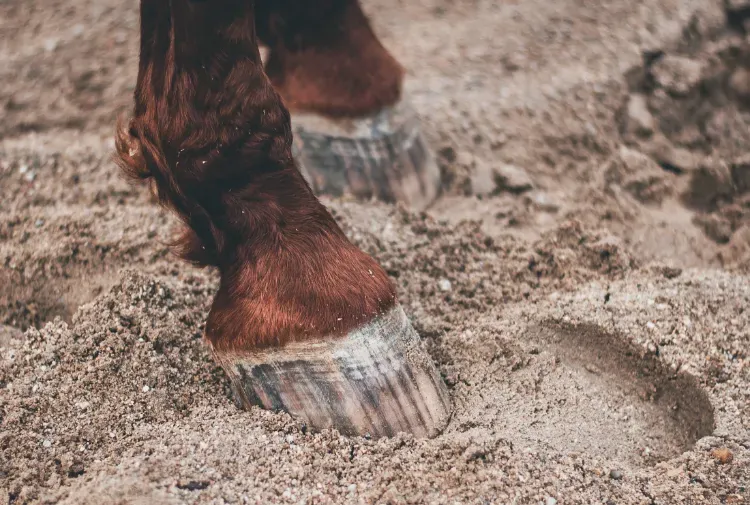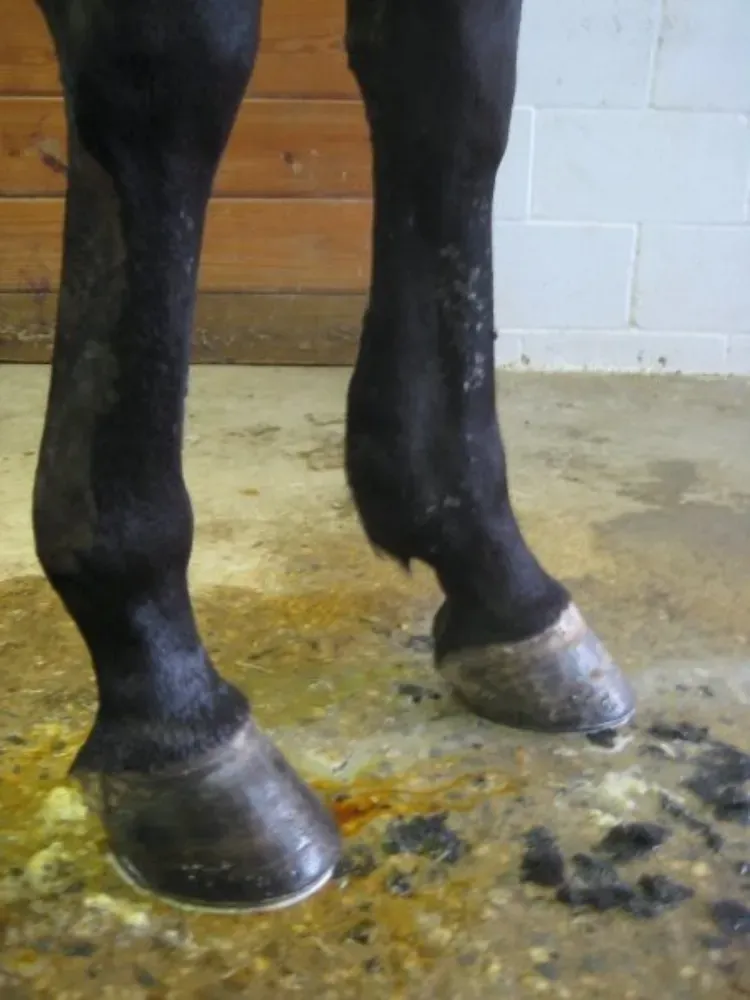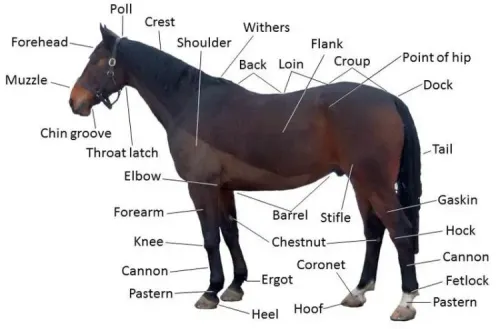
There are two tendons running down the back of a horse’s lower leg and they are called flexor tendons. This article looks at injury to the superficial digital flexor tendon (SDFT).

Noticing the Injury
This horse’s SDFT is swollen so he will have localised heat and pain.
Knowing the causes of SDFT Lameness
The two causes of this condition are:
- Tearing from over stretching
- Impact trauma.
So we must look at these problems in more detail.
1. Tearing
The four reasons tearing happens are listed below:
- Unfit horses working above their fitness level
- Fit horses operating at extreme exertion levels
- Horses doing activities they are not built for
- Unsuitable surfaces underfoot.
A single event causes tearing when a horse is not fit enough or is not built for its intended use. An unlucky twist or an unsuitable surface also causes this single event injury.
However, with performance horses, lesions are frequently the results of long-term damage over a number of months.
Tearing ranges from minor damage up to a total rupture of the tendon, but Ultrasound Tissue Characterisation (UTC) scanning reveals the extent of the damage. and your vet advises a suitable rehab programme.
2. ImpactTrauma
Another limb or an external force causes impact trauma and the damage ranges from a minor bruise to a tendon rupture. However, puncture wounds to the tendon sheath are severe and always need veterinary intervention.
Signs my Horse has a Flexor Tendon problem
- Inflammation and heat
- External wound
- Pain on palpitation
- Lameness
Rehab from an SDFT Lesion
This is linked to the amount of damage and UTC scanning detects this 7 to 10 days after the initial inflammation has subsided.
Use these procedures while waiting for a UTC scan:
- Box rest
- Anti-inflammatory pain killers
- Bandaging the limb and the opposite leg.
After your horse is scanned a number of invasive and/or non-invasive treatments are available.
1. Non-invasive Treatments
- Shockwave therapy to increase blood supply to the tendon
- Advanced Equine Thermography to look at the horse’s whole body
- Electrotherapy for pain relief
- Arc Equine to stimulate healing
2. Invasive Treatments
- Tendon splitting to increase blood supply
- Injecting platelet-rich plasma to increase blood supply and encourage the growth of healthy tendon tissue
- Stem cell injections to develop new tendon tissue
- Surgery to remove tendon sheath infections or to repair tendon lacerations
- Other surgical corrections
Your horse must have Tendon Support
Your horse’s tendons must be supported to prevent overloading and more damage. So suitable and correctly adjusted boots will be required.
Equestride boots are ideal
Equestride boots support tendon and ligament lesions and they provide 4 adjustable settings for different stages of rehabilitation. Your horse will need ongoing UTC scans to monitor his recovery rate and the correct boot setting.
Your vet advises a suitable exercise regime and this starts with walking in hand.
A typical rehabilitation programme
- Walking in hand
- Walking out hacking
- Mainly walking with a few quiet trots
- Extending the periods of trotting but with plenty of walking
- Introducing a little canter work
- Extending the period of time cantering
- Introducing galloping work
Two final considerations
- Chronic tendon problems go unnoticed until your horse is obviously lame.
- Mild acute strains go undetected, with significant injury developing weeks later.
The message this gives owners
For horse athletes, UTC scanning is extremely useful to spot emerging problems. This is best done just before a training schedule intensifies to more physical demands.

Article Suggestion
Front leg Conformation for better Strength, Stamina and Soundness
